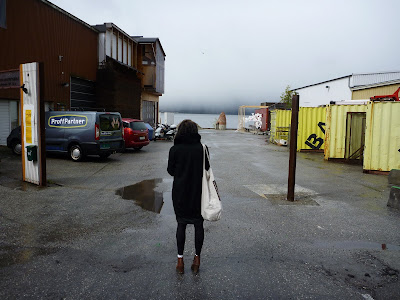1. How come so many people tend to associate the word "ugly" with industrial materials when talking about building and architecture, whereas the word "beautiful" will often be associated with natural materials?
Do they the industrial materials unfamiliar to people, even after centuries of being surrounded by them?
Is it their lack of complexity?
Perhaps it has something to do with the way weather and age? Most industrial materials look their best when they're new.
2. How come some many architects and designers refuse to accept this fact and its consequences?
Perhaps they're just completely in love with the not very subtle contrast between natural and industrial materials?
Is it because so many architects hope to annoy people when they live, and get famous after their death?
Is it because they have an obsession with their work looking "modern"?
Could it be that they consider their own way of experiencing a building to be a lot more important than everyone else's, and hope to convert people to the better by exposing them to what they don't like, again and again, until their sensitivity disappears?
Are they afraid of being called nostalgic if they use traditional materials, such as local wood and stone, earth, brick, straw and turf?
I am curious about your answers, and though my questions are rhetorical, they're also quite honest. Please comment on this blog post if you have any thoughts.
Is this better? And if so, how come? (I love it, but I'm not quite sure why.)

























